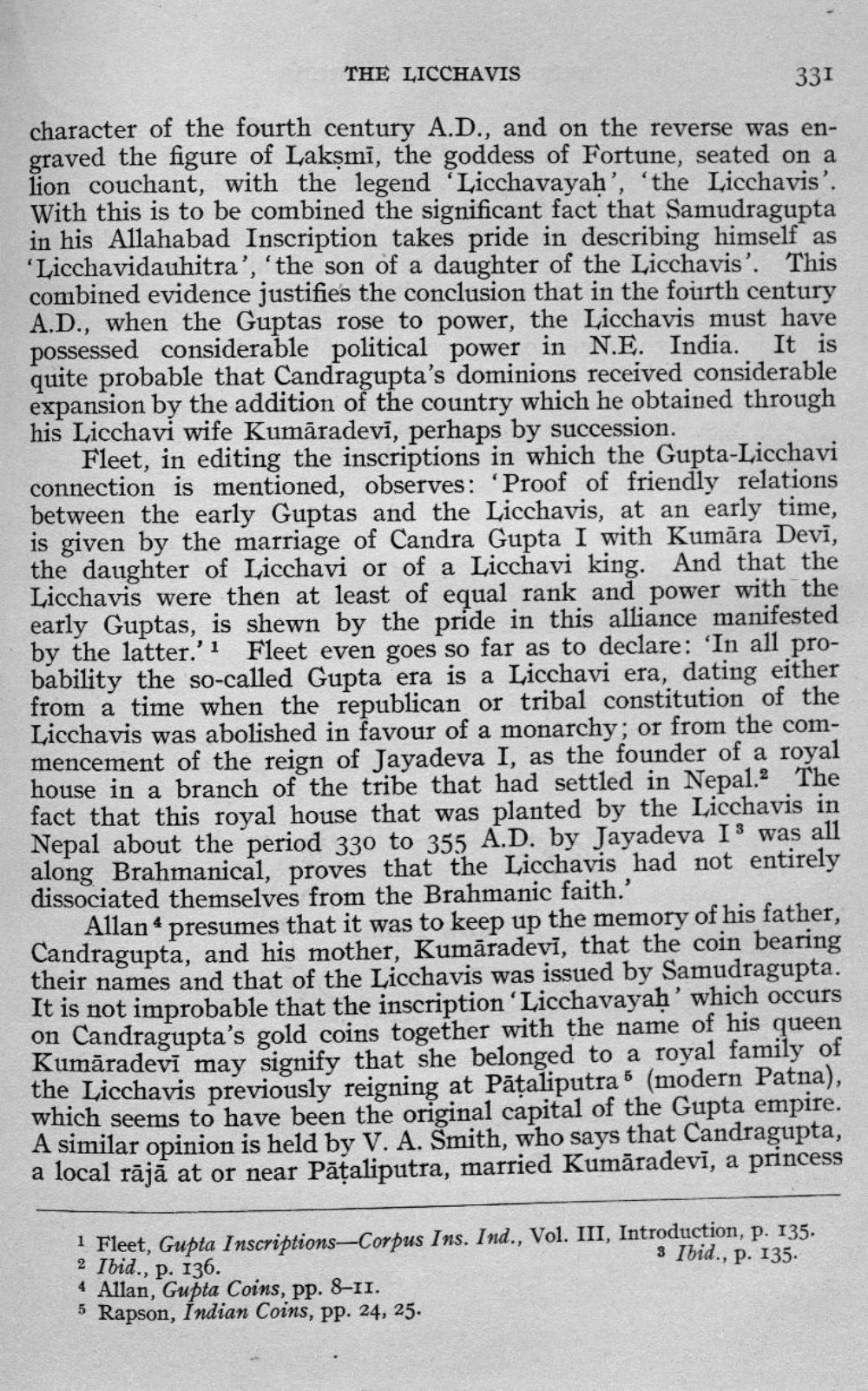________________
THE LICCHAVIS
331
character of the fourth century A.D., and on the reverse was engraved the figure of Laksmi, the goddess of Fortune, seated on a lion couchant, with the legend 'Licchavayah', 'the Licchavis'. With this is to be combined the significant fact that Samudragupta in his Allahabad Inscription takes pride in describing himself as 'Licchavidauhitra', 'the son of a daughter of the Licchavis'. This combined evidence justifies the conclusion that in the fourth century A.D., when the Guptas rose to power, the Licchavis must have It is possessed considerable political power in N.E. India. quite probable that Candragupta's dominions received considerable expansion by the addition of the country which he obtained through his Licchavi wife Kumaradevi, perhaps by succession.
Fleet, in editing the inscriptions in which the Gupta-Licchavi connection is mentioned, observes: 'Proof of friendly relations between the early Guptas and the Licchavis, at an early time, is given by the marriage of Candra Gupta I with Kumāra Devi, the daughter of Licchavi or of a Licchavi king. And that the Licchavis were then at least of equal rank and power with the early Guptas, is shewn by the pride in this alliance manifested by the latter.'1 Fleet even goes so far as to declare: 'In all probability the so-called Gupta era is a Licchavi era, dating either from a time when the republican or tribal constitution of the Licchavis was abolished in favour of a monarchy; or from the commencement of the reign of Jayadeva I, as the founder of a royal house in a branch of the tribe that had settled in Nepal.2 The fact that this royal house that was planted by the Licchavis in Nepal about the period 330 to 355 A.D. by Jayadeva I was all along Brahmanical, proves that the Licchavis had not entirely dissociated themselves from the Brahmanic faith.'
Allan presumes that it was to keep up the memory of his father, Candragupta, and his mother, Kumaradevi, that the coin bearing their names and that of the Licchavis was issued by Samudragupta. It is not improbable that the inscription 'Licchavayah' which occurs on Candragupta's gold coins together with the name of his queen Kumaradevi may signify that she belonged to a royal family of the Licchavis previously reigning at Pataliputra (modern Patna), which seems to have been the original capital of the Gupta empire. A similar opinion is held by V. A. Smith, who says that Candragupta, a local rāja at or near Pațaliputra, married Kumaradevi, a princess
5
1 Fleet, Gupta Inscriptions-Corpus Ins. Ind., Vol. III, Introduction, p. 135. 2 Ibid., p. 136.
3 Ibid., p. 135.
4 Allan, Gupta Coins, pp. 8-11.
5 Rapson, Indian Coins, pp. 24, 25.




